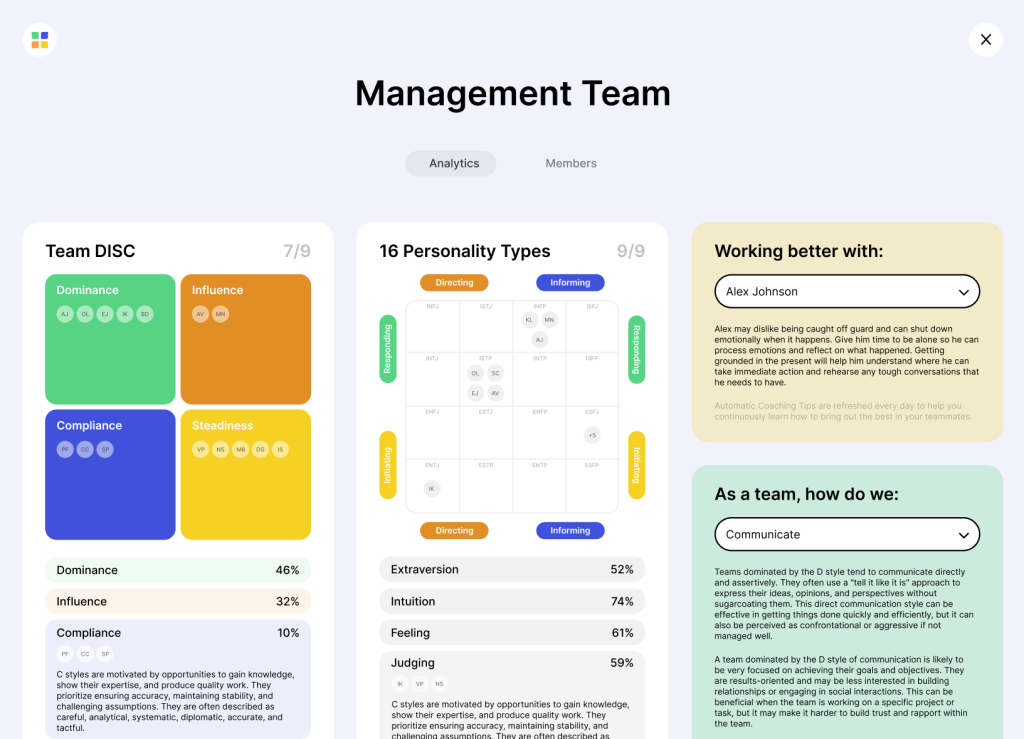People with ESTP personality type are energetic, sociable, and bold. If we examine it more carefully, we find that ESTP has two subtypes, ESTP-A and ESTP-T. The former stands for Assertive ESTP, and the latter for Turbulent ESTP. These subtypes share all the core characteristics of the type, but exhibit them in slightly different ways.
In this article, we’re going to explore the nuanced differences between ESTP-A and ESTP-T subtypes, from how they behave in friendships and relationships, to what career paths they should choose and avoid.
Differences Between ESTP-A and ESTP-T
Friendships
While both subtypes of ESTP are social butterflies, Assertive ESTPs are more outgoing and energetic than Turbulent ESTPs. People with an ESTP-A subtype tend to be bolder and more honest, but it sometimes comes at the price of being insensitive and even hurting others.
On the other hand, people with an ESTP-T subtype tend to be more introspective and sensitive, making them value the opinions and feelings of others around them.
Relationships
ESTP personality type can be a very intriguing and exciting partner. ESTP in relationships never run out of ideas for dates and are thrilling to date. However, they experience difficulties in emotional settings and have problems dealing with both, their own, and their partners’ emotions.
Entrepreneurs are very socially engaged, but it can make them appear cynical and superficial, spawning doubts in their partners’ minds.
ESTP-Ts are slightly timider, pay more attention to details, and have even more trouble dealing with their emotions compared to ESTP-As. It makes Turbulent ESTPs susceptible to neediness, which can cause problems in romantic relationships.
Workplace
ESTP-As are perfect at quick decision-making and are bold enough to take risks on a daily basis. However, sometimes it can be counterproductive, as ESTP-As are unlikely to consider the consequences and calculate risk.
On the other hand, ESTP-T tends to slow down when required and act in a more calculated manner. It makes Turbulent ESTPs less prone to impulsive mistakes.
Working in a Team
Assertive ESTPs can be great team leaders, but sometimes their boldness cause problems when working in a team. They tend to disregard the opinions of others, which in turn causes disturbance in a team.
Contrarily, Turbulent ESTPs are more introspective and perceptive, making them value the opinions of others. Because of that, ESTP-Ts are better team players and are more likely to work together with others to achieve a shared goal.
ESTP-As’ Strengths and Weaknesses
The main strength of Assertive ESTPs is their self-assurance and confidence. They believe that they do fewer mistakes than other people. Whether they do fewer mistakes is up for debate, but it makes them extremely driven and ambitious.
A difficult challenge extremely motivates Assertive ESTP, because they believe they can handle it. However, Assertive ESTP flaws arise from such drive and boldness to take action, and they can sometimes disregard other people and their feelings.
Despite being great at social interactions, ESTPs can find it difficult to move past superficial small talk and connect to others on a deeper and more intimate level.
ESTP-Ts’ Strengths and Weaknesses
Turbulent entrepreneurs are more self-critical and less self-assured than their Assertive counterparts. From it spawns both, the Turbulent ESTP strengths and weaknesses.
Because they are less assured about their actions, ESTP-Ts are more likely to consider the consequences of their actions and tend to be more introspective.
It makes them less susceptible to impulsivity caused by boredom. As a result, ESTP-Ts are less likely to take a risk in both, personal and professional lives.
Jobs and Career Paths for ESTP-T
Although Turbulent ESTPs are as bold as their Assertive counterpart, they are more likely to ask for advice and listen to what others have to say. It makes them dynamic team players that can always improve the ideas of others.
They are also more sensitive compared to ESTP-As, which makes them better for jobs that require human interaction and collaboration. That being said, Turbulent ESTP still carry the same boldness and are great at decision making intense situations.
List of 10 Most Recommended Jobs for ESTP-Ts
- Stockbroker
- Airline pilot
- Police officer
- Bartender
- Paramedic
- Flight attendant
- Developer
- Civil engineer
- Hotel manager
- Chiropractor
10 Jobs and Career Paths That ESTP-T Should Avoid
Here are 10 jobs that you shouldn’t do as ESTP-T:
- Writer
- Dentist
- Chemist
- Pharmacist
- Curator
- Nursing
- Physician Assistant
- Market researcher
- Craft artist
- Electrical engineer
Jobs and Career Paths for ESTP-A
Assertive ESTPs have a natural knack for leading others. They are also incredibly self-confident, self-assured, and are always ready to take action. It makes them perfect for executive and managerial positions, but ESTP-As also shine in other stressful careers.
Assertive ESTP job paths are those that demand being proactive and quick on one’s feet. Because they rarely consider the consequences of their actions, they can make decisions in split seconds, which is valued in many different fields.
List of 10 Most Recommended Jobs for ESTP-As
- Military officer
- Real estate broker
- Mechanic
- Insurance agent
- Budget analyst
- Statistician
- Air traffic controller
- Logistics
- Chief Financial
- Officer sales manager
List of 10 Jobs and Career Paths That ESTP-A Should Avoid
- Animator
- Market researcher
- Librarian
- Psychologist
- Social worker
- Veterinary
- Technician
- Medical assistant
- Teacher
- Waiter
ESTP-A and ESTP-T FAQs
According to MBTI personality charts, the pair of ESTP and ESTP could work, but they aren’t ideal. Still, sometimes two ESTPs can work well together.
The reason is that people with ESTP personalities are ready to explore the world and face new challenges. They like adventure and having fun with other people who have similar interests. Considering this, they can easily communicate with individuals with the same personality type and get along with them.
TP is among the least common personality types. Specifically, the ESTP personality makes up about 4% of the general population, which makes it the 7th rarest personality type after INFJ, ENTJ, INTJ, ENFJ, ENTP, and INTP.
Considering that ESTP-T is a subtype of the ESTP personality, it’s even rarer. However, there are no official statistics regarding the percentage of Turbulent ESTPs in the general population. Still, it’s clear that ESTP-Ts make up less than 4% of the population.


